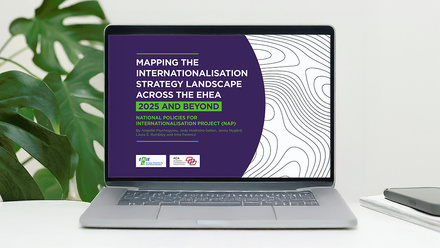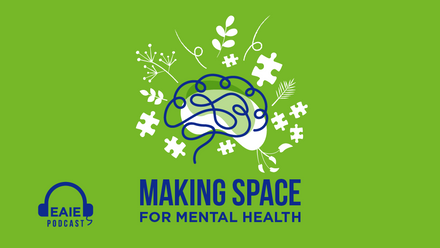Short-term immersion: 5 best practices for international educators

Integrating short-term mobility into internationalisation strategies
While long-term study abroad programmes are often the focus of internationalisation efforts, short-term immersion programmes are a powerful tool that institutions can leverage to enhance student engagement, global competencies and institutional partnerships. When designed effectively, these programmes can serve as an entry point for students who might not otherwise participate in global learning, while also strengthening ties between sending and host institutions. For principals, school leadership and career and guidance departments, integrating short-term mobility into their institutional offerings can provide students with a crucial stepping stone toward international study and career preparedness. These programmes help students gain exposure to global academic environments, develop cross-cultural skills and explore career opportunities beyond their home countries.
As with any educational initiative, not all short-term programmes are created equal. Their impact depends greatly on how intentionally they are designed and delivered. If you are working in international education and considering developing or refining a short-term immersion programme, it’s important to think strategically about its structure, outcomes and long-term value.
This article explores best practices for international educators looking to implement or refine short-term immersion programmes to maximise their impact.
1. Designing programmes with clear learning outcomes
The success of a short-term immersion programme depends on its ability to deliver tangible academic, cultural and professional benefits. Institutions should start by defining clear learning objectives that align with their broader internationalisation strategies. For example, should the programme focus on language acquisition, intercultural competence or career readiness? Should it incorporate service learning, faculty-led research or industry engagement?
Answering these questions early ensures that the programme’s structure and activities provide meaningful educational value. School administrators can play a pivotal role in ensuring that these learning outcomes align with their students' academic and career goals. Collaboration between international offices and career guidance departments can create pathways that help students apply their global experiences to future studies or professional aspirations.
2. Balancing academic rigour with experiential learning
A well-designed short-term programme integrates classroom learning with real-world application.
Best practices for striking this balance include:
- Embedding pre-departure and post-programme reflection exercises to deepen learning
- Structuring programmes around themes or case studies relevant to students’ fields of study
- Collaborating with local institutions, businesses or NGOs to provide hands-on experiences
For example, a programme focused on global health might include university-led coursework, hospital site visits, and discussions with healthcare professionals in the host country. For career-focused programmes, partnerships with multinational companies or industry leaders can provide networking opportunities and practical insights into global career pathways.
3. Fostering institutional partnerships
For host institutions, short-term immersion programmes present an opportunity to develop long-term collaborations with sending institutions. Best practices for fostering such partnerships include:
- Establishing co-designed curricula that align with both institutions’ educational priorities
- Creating pathways for short-term students to return for semester-long or degree programmes
- Developing shared funding models that make participation more accessible
Guidance counsellors and career advisors can work closely with international education departments to help students identify programmes that align with their academic and professional aspirations. For institutions, these partnerships can also serve as a recruitment pipeline for longer-term study abroad or degree programmes.
4. Supporting student adaptation and well-being
Unlike long-term study abroad, short-term immersion leaves little time for students to adjust to cultural differences. To maximise student success:
- Institutions should provide structured cultural orientation sessions before arrival.
- Faculty and staff should be equipped with strategies to support students through cultural adaptation challenges.
- Building peer mentorship models, where former participants guide incoming students, can help ease transitions.
For school leadership and counsellors, ensuring that students receive pre- and post-programme support can be critical in reinforcing the long-term benefits of these experiences. Reflection workshops and reintegration activities can help students translate their international experiences into actionable career and academic goals.
5. Measuring programme impact
To ensure continuous improvement, institutions should implement assessment tools to measure the effectiveness of short-term programmes. Key indicators in this area might include:
- Student learning outcomes and skill development.
- Long-term impacts on students’ academic and career trajectories.
- Institutional benefits, such as increased student interest in full-degree programmes or strengthened partner relationships.
By gathering qualitative and quantitative data, institutions can refine their approach and demonstrate the value of short-term programmes to stakeholders. Career services offices can also use this data to help students articulate the skills gained during immersion experiences in job applications and university admissions.
Conclusion
Short-term immersion programmes offer a high-impact avenue for students to gain global experiences and for institutions to strengthen international collaboration. By prioritising intentional programme design, meaningful partnerships, and student support, educators can ensure these programmes serve as a strategic component of their institution’s internationalisation efforts. With careful planning, short-term programmes not only provide students with transformative experiences but also contribute to the broader mission of preparing globally competent graduates. Principals, school leaders, and career counsellors have a unique opportunity to champion these initiatives, ensuring that students gain the skills, confidence, and global perspective needed for future success.






